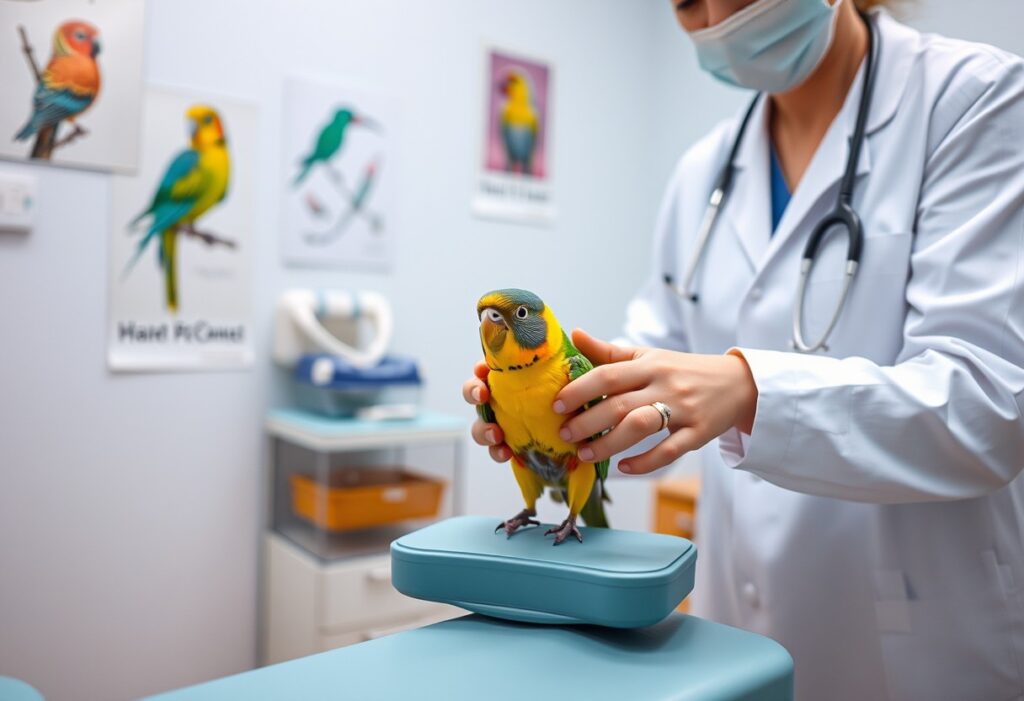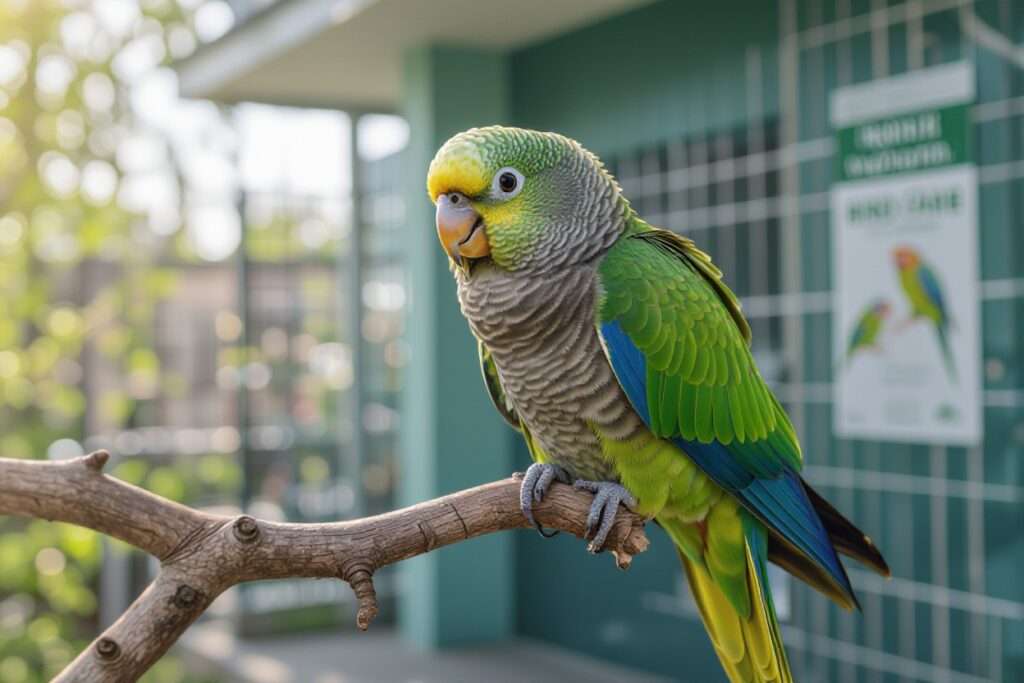Overcoming your bird’s fear of the vet is vital for their health and well-being. Understanding the reasons behind your bird’s anxiety can help you implement effective strategies to ease their stress. With careful preparation and the right approach, you can help your feathered friend feel more comfortable during vet visits, ensuring they receive crucial medical care without adding to their fears. In this guide, you will discover tips to create a positive experience for both you and your bird, enhancing their trust in you and their vet.
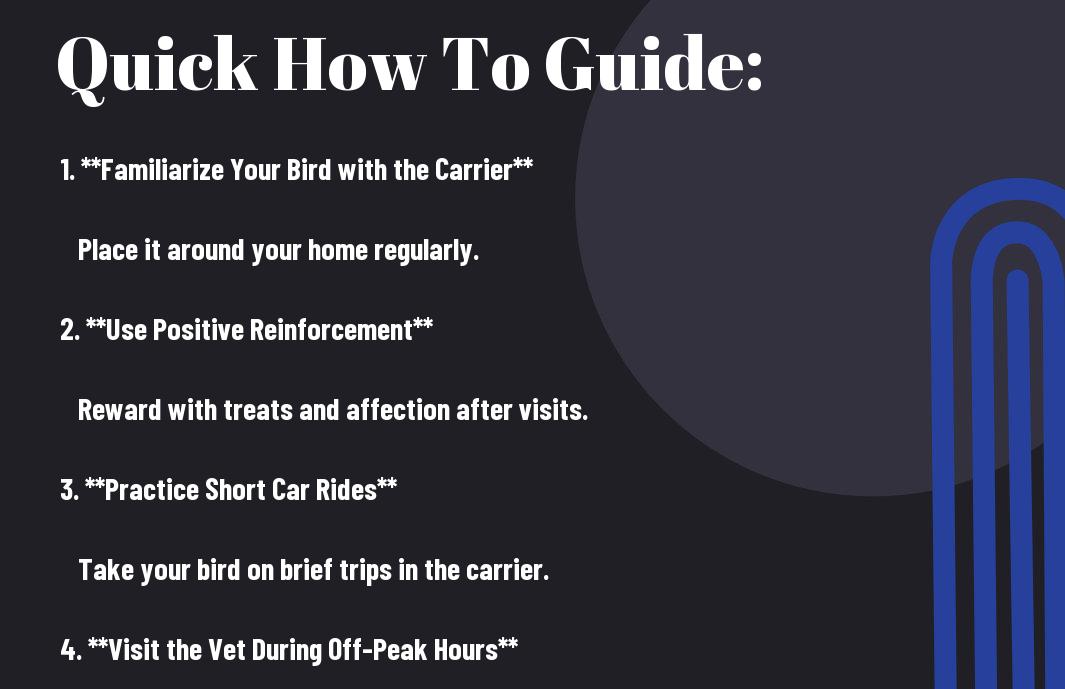
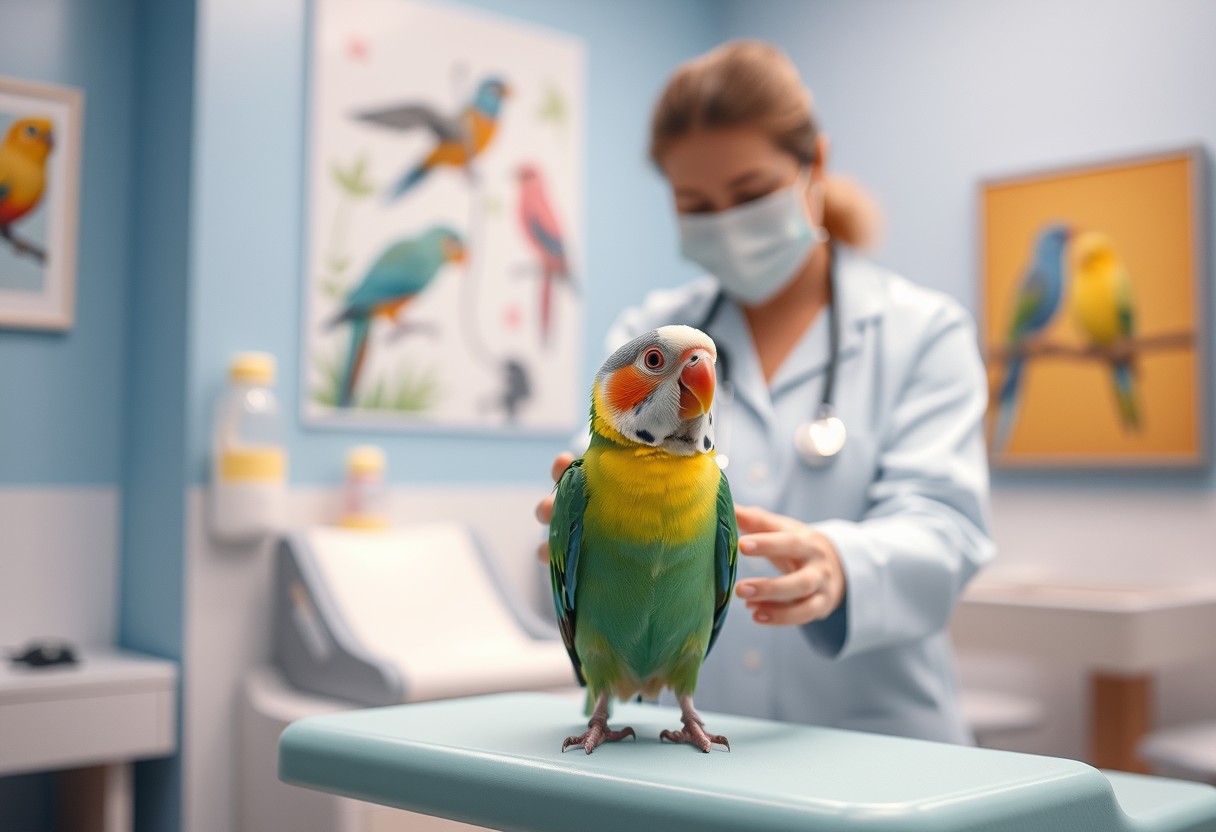
Understanding Your Bird’s Fear
For many bird owners, encountering a feathered friend that is fearful of the vet can be a distressing experience. Understanding the root of your bird’s anxiety is crucial for providing the best possible care and ensuring that your pet feels safe and secure during veterinary visits. Fear in birds can stem from a variety of factors, and recognizing these can help you address the issue effectively.
Common Reasons Birds Fear Vets
On occasion, your bird’s fear of the vet may arise from previous negative experiences. If your pet had a traumatic or painful encounter during a past visit, it’s likely they associate the vet with discomfort. Additionally, birds are naturally prey animals and can intuitively sense unfamiliar environments and smells that heighten their anxiety.
On top of that, many birds are highly sensitive creatures. Changes in environment, such as different sounds, bright lights, or even the presence of unfamiliar animals can provoke fear. Moreover, handling by strangers, such as vet technicians, can be particularly distressing for birds that are not accustomed to being touched or restrained by unfamiliar hands.
Signs of Anxiety in Birds
Some birds may exhibit a variety of stress-related behaviors when they are anxious, and recognizing these signs is vital for addressing their fears. You might notice your pet becoming excessively vocal, displaying signs of restlessness, or attempting to escape when it senses that a vet visit is impending. Additionally, a frightened bird may fluff its feathers, back away from certain stimuli, or even refuse to eat.
Understanding these signs of anxiety can help you gauge your bird’s emotional state. Physical indicators such as rapid breathing, perched movements, and even aggressive behavior are common. By being attuned to these signals, you can better support your bird during stressful situations, ultimately making vet visits a more manageable part of your pet’s life.
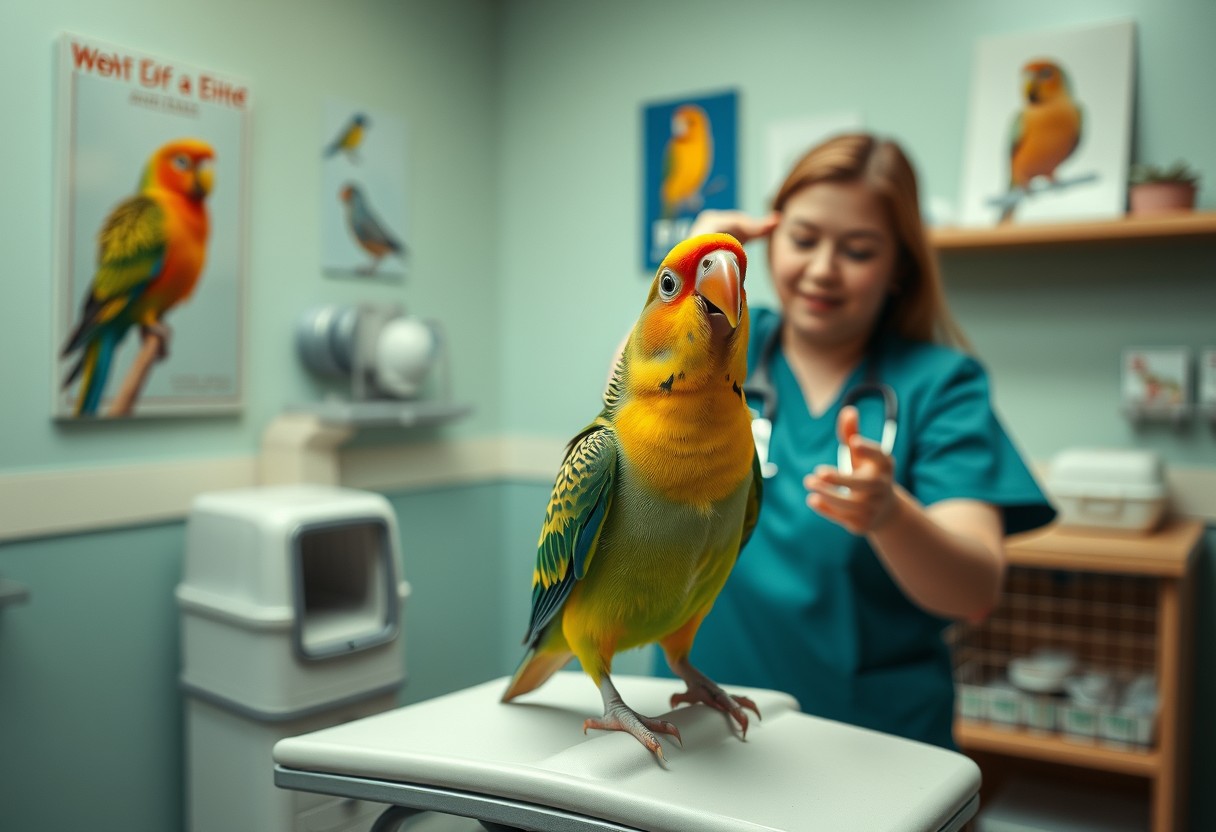
Preparing for the Vet Visit
There’s no denying that a trip to the vet can be a daunting experience for both you and your feathered friend. However, with some preparation, you can help make the visit less stressful. The key is to create a calm and familiar environment for your bird, which starts with the right carrier, getting them accustomed to it, and ensuring a peaceful atmosphere during the journey.
Choosing the Right Carrier
One of the most critical aspects of preparing for your bird’s vet visit is choosing the right carrier. The carrier should be comfortable, well-ventilated, and sized appropriately for your bird. Make sure it has a secure latch to prevent any escapes. A carrier that mimics their home environment, with familiar perches or toys, can substantially reduce your bird’s anxiety during travel. Avoid using carriers that are too large, as they can make your bird feel insecure and prone to unnecessary movement.
Familiarizing Your Bird with the Carrier
Assuming you’ve selected a suitable carrier, the next step is to familiarize your bird with it. Begin by placing the carrier in a quiet, familiar area of your home where your bird spends time. Encourage your bird to explore the carrier by placing their favorite treats and toys inside. Spending time next to the carrier and allowing your bird to enter on their own will help build a sense of safety and positive associations with it.
Understanding how your bird behaves can also significantly aid in this process. Each bird has a unique personality; some may be curious, while others could be timid. Monitor their reactions to the carrier and adjust your approach, ensuring that you provide lots of positive reinforcement when they do show interest. This gradual process may take some time, but it’s vital for helping your bird feel comfortable and secure.
Ensuring a Calm Environment
Birds can pick up on the stress levels of their owners, so it’s necessary to maintain a calm environment before and during the vet visit. Speak softly to your bird, and avoid sudden movements that might startle them. It’s also helpful to play soft music or utilize familiar sounds from their home environment to create a soothing atmosphere. If you plan to travel in a vehicle, try to limit the exposure to upsetting noises, such as loud traffic or sudden stops.
Carrier preparations are equally important for minimizing stress. You might want to cover the carrier with a light cloth to create a darker space, which can help your bird feel more secure. Make sure to avoid any harsh or flashing lights, as these can further increase anxiety. By taking these small yet impactful steps, you are setting the stage for a more pleasant experience for both you and your bird during their vet visit.
Tips for a Successful Vet Visit
Keep in mind that a successful vet visit can be crucial for your bird’s overall health and well-being. Preparing effectively can help reduce stress for both you and your feathered friend. Here are some key tips to consider:
- Choose the Right Time for the appointment
- Stay Calm during the visit
- Use Positive Reinforcement when handling your bird
- Communicate with your vet about your bird’s specific fears
- Prepare your bird for the car ride
Timing the Visit Appropriately
Assuming that your bird may experience significant stress when visiting the vet, choosing the right time for the appointment can make all the difference. Early morning visits tend to be quieter, as the clinic is often less busy before the afternoon rush. Additionally, booking a time when your bird is naturally more active can help mitigate any anxiety, as they will be more alert and less likely to feel overwhelmed.
Choosing a day when your bird has had a good night’s rest can also help. Consider marking the day on your calendar to ensure that it’s a low-stress day for your bird. This might mean avoiding days where you’re usually busy or where there are loud noises in and around your home.
Using Calm and Soothing Techniques
To create a peaceful environment for your bird during the vet visit, using calm and soothing techniques is imperative. Start practicing these calming methods at home before the appointment. Speak softly to your bird, offer gentle strokes, and handle them in a way that they feel secure. This can serve as a foundation for helping your bird stay relaxed during the trip.
Timing is also critical when using these calm techniques. Begin calming exercises a few days before the vet visit. Spend time each day handling your bird gently while speaking in a low and soothing tone. You can also use soft, slow movements when you place your bird in its carrier or while securing it for travel. These practices not only help build trust but also reinforce a sense of security.
Bringing Comfort Items
If you want to make the vet visit as comfortable as possible for your bird, consider bringing along familiar items that can help ease their anxiety. A favorite toy, blanket, or even a piece of your clothing can provide a sense of security during the appointment. These items carry familiar scents and feelings, helping to create a comforting presence in an unfamiliar environment.
The presence of these comfort items can significantly reduce your bird’s fear during the visit. Familiar smells can have a calming effect, making your bird feel less isolated in a new environment. Ensure that whatever you bring is safe for your bird and won’t create distractions that could hinder the vet’s examination.
Any preparation you can do to combine the right timing, calming techniques, and comfort items will greatly enhance the likelihood of a successful vet visit for your treasured feathered companion.
Post-Visit Care
Once again, your bird’s visit to the vet can be a stressful experience, making it important to focus on proper post-visit care to help them recover and feel secure in their environment. After a veterinary appointment, it’s common for birds to be anxious or apprehensive, especially if they associate the experience with fear or discomfort. Your role in helping them navigate this recovery period is crucial. By monitoring their behavior and reinforcing positive experiences, you can create a more soothing environment for your feathered friend.
Monitoring Your Bird’s Behavior
You should keep a close eye on your bird’s behavior after the vet visit. Look for any signs of distress, such as increased vocalization, feather plucking, or changes in their eating and drinking habits. Birds are sensitive creatures, and even subtle shifts in their routine can signal anxiety. If your bird appears withdrawn or is exhibiting any concerning behaviors, it may be worth contacting your veterinarian for advice or a follow-up appointment.
You may also notice variations in your bird’s usual behavior, such as excessive preening or reluctance to engage with toys or people. It’s important to be patient and provide a safe space where they can decompress. Low lighting, quiet time, and access to familiar toys can help them settle down after such an overwhelming experience.
Reinforcing Positive Associations
Reinforcing positive associations is a key strategy in mitigating your bird’s fear of future vet visits. By creating positive experiences that build trust, you can help your bird associate the veterinarian with comfort instead of dread. Start by offering your bird their favorite treat or a new toy when you return home from the vet. This little reward will help them create a mental link between the vet visit and something enjoyable.
Reinforcing positive interactions consistently is vital. Whenever your bird shows signs of calmness or curiosity after a vet visit, take the opportunity to engage them positively through gentle petting, verbal praise, or additional treats. This not only encourages reassurance but also reinforces a healthier perception of the vet experience overall.
Birds, like many animals, form associations through *repeated experiences*. If your bird consistently receives positive reinforcement after a vet visit, they are more likely to view future appointments with less fear. Just as important, make sure that you also remain calm during these interactions, as your own anxiety can contribute to your bird’s stress levels. Through *patience, consistency, and a little creativity*, you can turn what was once a daunting experience into an opportunity for connection and trust-building between you and your feathered companion.
FAQ
Q: What are some signs that my bird is afraid of the vet?
A: Birds may show a variety of signs indicating that they are afraid of the vet. Common behaviors include excessive vocalization, flapping their wings uncontrollably, hiding in their cage, puffing up their feathers, or biting when approached. Additionally, a bird may become unusually quiet or lethargic, which can be an indicator of stress or fear. Observing your bird’s body language and vocalizations during transport or upon entering the vet’s office can provide further insights into their level of fear.
Q: How can I help my bird feel more comfortable with vet visits?
A: To help your bird feel more comfortable, start by acclimating them to their carrier long before the vet appointment. Use the carrier as a safe space at home, allowing your bird to explore it freely with treats or toys. You can also play relaxing music in the background during transport to help soothe your pet. Additionally, speak softly and reassuringly to your bird to alleviate their stress. If possible, choose a vet who specializes in avian care and can provide a gentle environment for your bird, reducing fear and anxiety during examinations.
Q: What strategies can I use during the vet visit to reduce my bird’s anxiety?
A: During the vet visit, keep your bird covered with a lightweight, breathable cover to create a sense of security. This can help diminish visual stimuli, making them feel less exposed and anxious. Avoid sudden movements and loud noises, as these can startle your bird. Also, bring along your bird’s favorite treats to create positive associations with the vet experience. If your bird is particularly anxious, ask the veterinarian if they can provide opportunities for breaks during the examination, allowing your bird to process the environment at their own pace.
